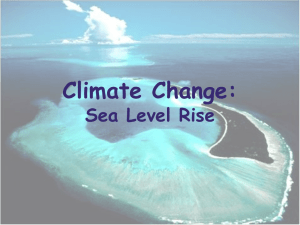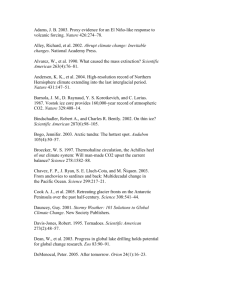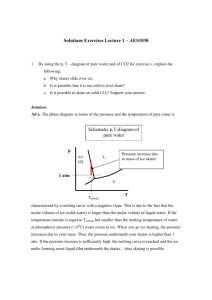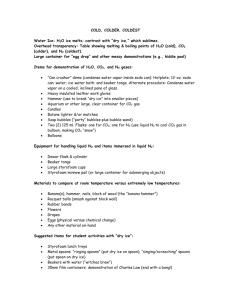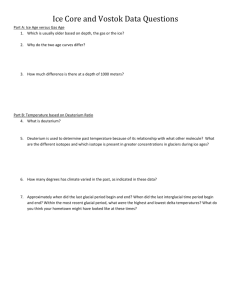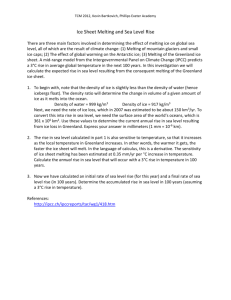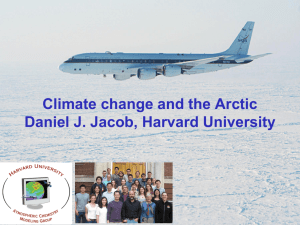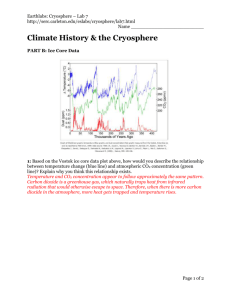It is definitely getter warmer
advertisement
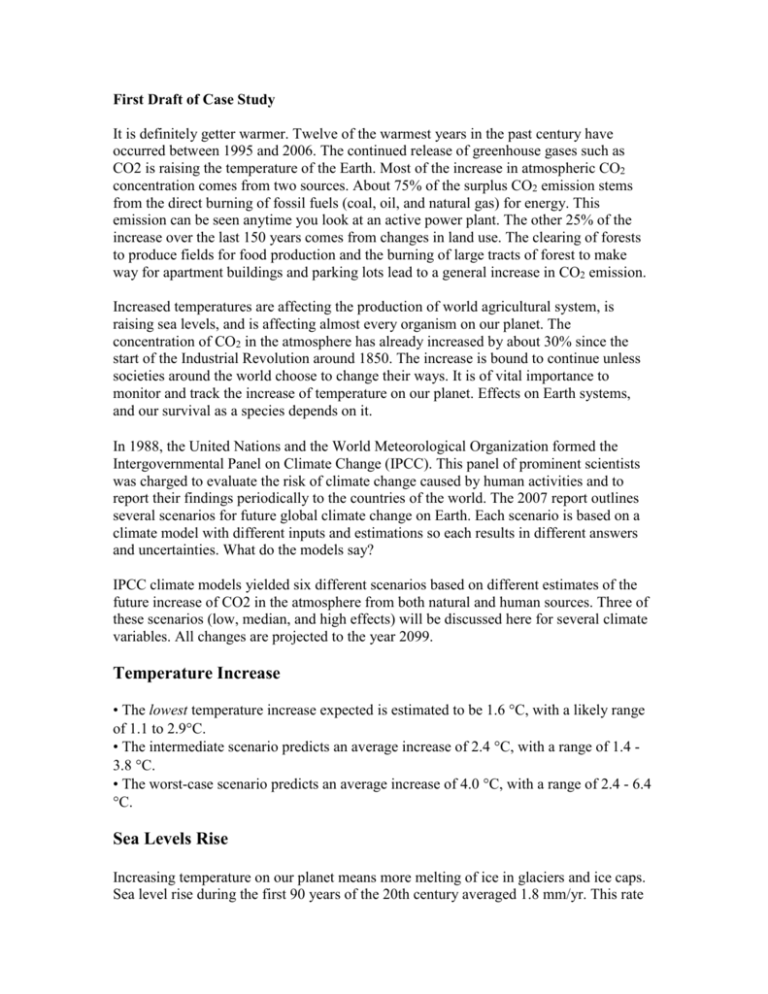
First Draft of Case Study It is definitely getter warmer. Twelve of the warmest years in the past century have occurred between 1995 and 2006. The continued release of greenhouse gases such as CO2 is raising the temperature of the Earth. Most of the increase in atmospheric CO2 concentration comes from two sources. About 75% of the surplus CO2 emission stems from the direct burning of fossil fuels (coal, oil, and natural gas) for energy. This emission can be seen anytime you look at an active power plant. The other 25% of the increase over the last 150 years comes from changes in land use. The clearing of forests to produce fields for food production and the burning of large tracts of forest to make way for apartment buildings and parking lots lead to a general increase in CO2 emission. Increased temperatures are affecting the production of world agricultural system, is raising sea levels, and is affecting almost every organism on our planet. The concentration of CO2 in the atmosphere has already increased by about 30% since the start of the Industrial Revolution around 1850. The increase is bound to continue unless societies around the world choose to change their ways. It is of vital importance to monitor and track the increase of temperature on our planet. Effects on Earth systems, and our survival as a species depends on it. In 1988, the United Nations and the World Meteorological Organization formed the Intergovernmental Panel on Climate Change (IPCC). This panel of prominent scientists was charged to evaluate the risk of climate change caused by human activities and to report their findings periodically to the countries of the world. The 2007 report outlines several scenarios for future global climate change on Earth. Each scenario is based on a climate model with different inputs and estimations so each results in different answers and uncertainties. What do the models say? IPCC climate models yielded six different scenarios based on different estimates of the future increase of CO2 in the atmosphere from both natural and human sources. Three of these scenarios (low, median, and high effects) will be discussed here for several climate variables. All changes are projected to the year 2099. Temperature Increase • The lowest temperature increase expected is estimated to be 1.6 C, with a likely range of 1.1 to 2.9C. • The intermediate scenario predicts an average increase of 2.4 C, with a range of 1.4 3.8 C. • The worst-case scenario predicts an average increase of 4.0 C, with a range of 2.4 - 6.4 C. Sea Levels Rise Increasing temperature on our planet means more melting of ice in glaciers and ice caps. Sea level rise during the first 90 years of the 20th century averaged 1.8 mm/yr. This rate accelerated during the 1990s. The Greenland ice cap, one of the largest ice caps in the world added to the total amount of melt water as it began to show signs of decreasing mass during this time period. The IPCC projections show the following increasing rates of sea level rise per scenario. • The low estimate indicates an increase that ranges from 0.18 to 0.38 mm/yr. • The median estimate of sea level rise is an increase of from 0.20 to 0.43 mm/yr. • The worst-case scenario predicts that the increase of sea level rise will range from. 0.26 to 0.59 mm/yr. The partial melting of the Greenland ice sheet and the west Antarctic ice sheet would result in a sea level increase of 4 to 6 meters or more. The complete melting of these two bodies of ice would result in a tremendous increase of 12 meters in sea level. The end result of rising sea levels is the inundation of coastal areas, the loss of habitat for coastal and estuarine species, and billions of dollars in lost property. All countries in the world will be affected by changes in temperature and seal level. The regions that will be most severely affected are often the regions that are the least able to adapt to the changes. Bangladesh, one of the poorest nations in the world, is projected to lose 17.5% of its land if sea level rises just one meter displacing tens of thousands of people. Several islands throughout the South Pacific and Indian Oceans will be at similar risk of increased flooding and severe storm surges. Coastal flooding likely will threaten animals, plants, and fresh water supplies. Local agriculture in these regions could grind to a halt causing food shortages and famines on a regional basis. NASA Earth Observation data monitoring temperature data has been systematically taken since 2001. What does recent data reveal about changes in temperature in land and sea area? How does recent data compare with data from the past. Can you analyze these data and compare your results with predictions that scientists are making about the future climate of Earth?
